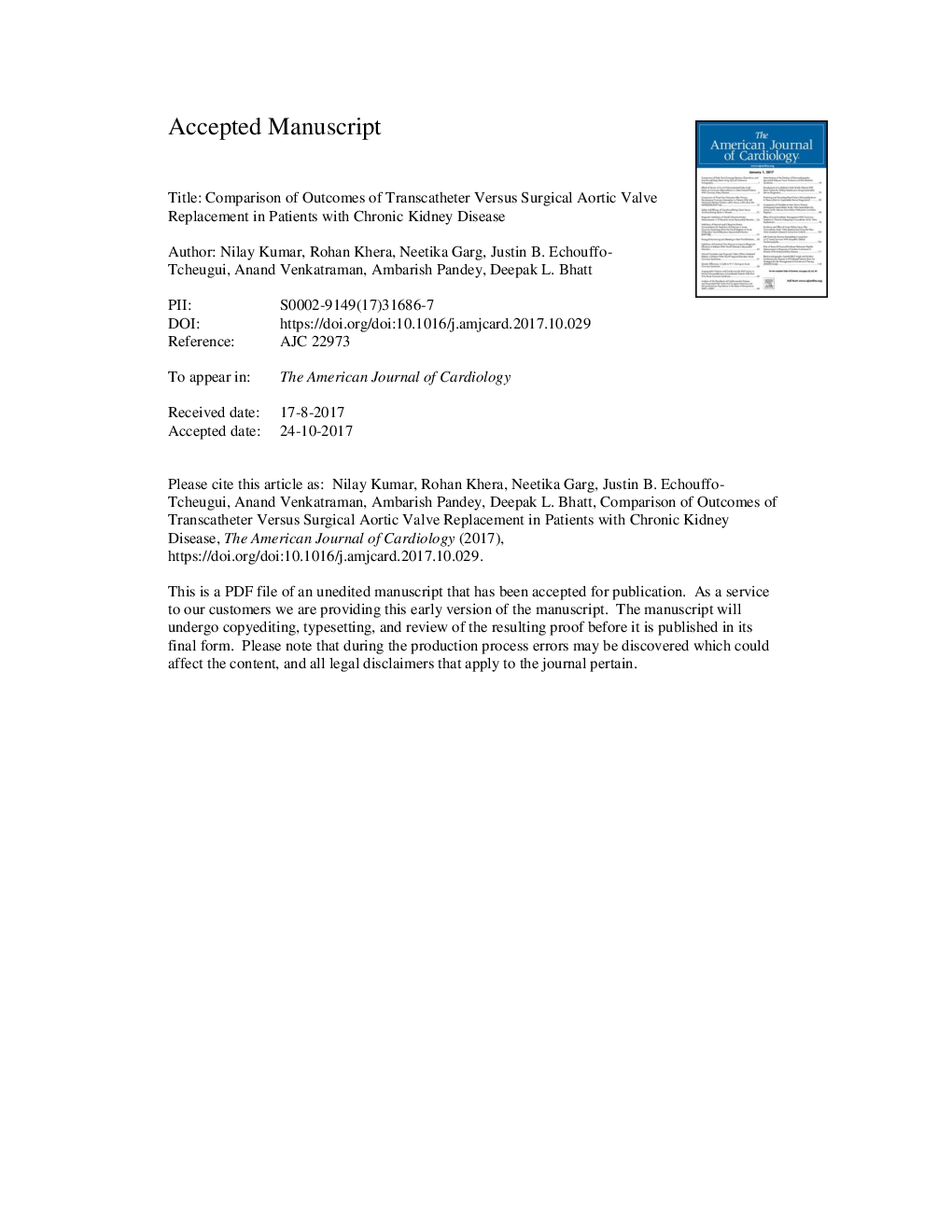| Article ID | Journal | Published Year | Pages | File Type |
|---|---|---|---|---|
| 8651544 | The American Journal of Cardiology | 2018 | 20 Pages |
Abstract
There are few data comparing outcomes of transcatheter aortic valve implantation (TAVI) with surgical aortic valve replacement (SAVR) in patients with chronic kidney disease. In this retrospective cohort study using the National Inpatient Sample 2011 to 2014, we included a total of 2,820 TAVI and 4,054 SAVR procedures, representative of 14,039 TAVI and 19,835 SAVR procedures nationally. Co-primary outcomes were in-hospital mortality, acute kidney injury (AKI), dialysis-requiring AKI, and postoperative stroke. In multivariate analysis, TAVI was associated with a lower in-hospital mortality (odds ratio [OR] 0.47, 95% confidence interval [CI] 0.32 to 0.69, pâ<â0.001), rates of AKI (OR 0.18, 95% CI 0.14 to 0.22, pâ<â0.001), dialysis-requiring AKI (OR 0.30, 95% CI 0.20 to 0.44, pâ<â0.001), and postoperative stroke (OR 0.27, 95% CI 0.13 to 0.53, pâ<â0.001) compared with SAVR. In 1001 propensity-matched pairs of TAVI and SAVR procedures, TAVI was associated with lower in-hospital mortality (OR 0.67, 95% CI 0.45 to 0.99, pâ=â0.047) rates of AKI (OR 0.39, 95% CI 0.32 to 0.46, pâ<â0.001), dialysis-requiring AKI (OR 0.53, 95% CI 0.35 to 0.81, pâ<â0.001), postoperative stroke (OR 0.46, 95% CI 0.20 to 0.98, pâ=â0.045), significantly shorter length of stay (OR 0.35, 95% CI 0.29 to 0.42, pâ<â0.001), and nonsignificant difference in cost (OR 1.05, 95% CI 0.88 to 1.26, pâ=â0.57) compared with SAVR. In conclusion, TAVI may be a preferable approach to SAVR in patients with severe aortic stenosis in the setting of chronic kidney disease.
Related Topics
Health Sciences
Medicine and Dentistry
Cardiology and Cardiovascular Medicine
Authors
Nilay MD, Rohan MD, Neetika MD, Justin B. MD, Anand MD, Ambarish MD, Deepak L. MD, MPH,
